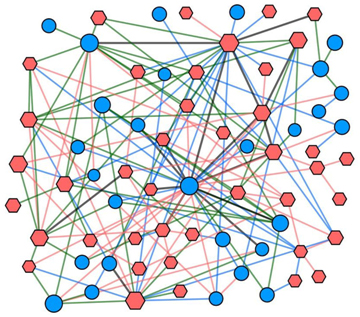Mutations in genes that cause cancer can also weaken cancer cells, giving people the opportunity to develop drugs that selectively kill them without affecting normal cells. This concept is called "synthetic lethality" because these drugs are only fatal to the mutated (or synthetic) cells. In a new study, researchers from the University of California, San Diego, the University of California, San Francisco, Stanford, and the Cancer Cell Map Initiative have developed a new way to find synthetic lethal genes. combination. This approach offers 120 new opportunities for cancer drug development. The results of the study were published online March 20, 2017 in the journal Nature Methods, entitled "Combinatorial CRISPR – Cas9 screens for de novo mapping of genetic interactionsâ€.

Image courtesy of UC San Diego Health.
Dr. John Paul Shen, a postdoctoral researcher and clinical lecturer at the University of California, San Diego School of Medicine, said, "The mechanism of action of the ovarian cancer drug olaparib is synthetic lethality - when the BRCA gene is mutated, it inhibits the other The mutated gene kills only ovarian cancer cells. Many other cancers may be treated similarly in this way, but we have not known which combination of mutations is synthetically lethal." Shen, University of California Dr. Dongxin Zhao, a postdoctoral researcher at the Jacobs School of Engineering in San Diego, and Dr. Roman Sasik, a computational biologist at the University of California, San Diego, are co-first authors of the paper.
To overcome this limitation, these researchers have developed a new approach: using the gene editing technology CRISPR/Cas9 to simultaneously test thousands of synthetic lethal interactions. The mechanism by which CRISPR/Cas9 works is that scientists design a "guide RNA (gRNA)" to match a specific target gene sequence in a cell. This gRNA directs the Cas9 enzyme to this desired site, where it cleaves this DNA sequence. The cell is able to repair this DNA break, but it does not accurately repair the break, thus inactivating the gene.
In this study, the researchers designed a CRISPR/Cas9 system containing two gRNAs: (1) one gRNA targets a tumor suppressor gene, which is frequently mutated in cancer; and (2) another gRNA Target a gene that can also be destroyed by a cancer drug. They used this system to target all 73 pairs of oncogenes in a total of 141,912 oncogene combinations in three laboratory cell lines, human cervical cancer cells, lung cancer cells, and embryonic kidney cells. They then measured cell growth and death.
This approach reveals more than 120 synthetic lethal interactions.
Our company specializes in providing Nootropics raw materials -Nootropics Nootropics Nootropics powder Nootropic Active Pharmaceutical Ingredients Nootropics peptides
We also provide Active Pharmaceutical Ingredients // Bodybuilding Peptide //Sarms and so on

Nootropics , Nootropics powder , Nootropic Active Pharmaceutical Ingredients , Nootropics peptides
XI AN RHINE BIOLOGICAL TECHNOLOGY CO.,LTD , https://www.rhinebioteches.com